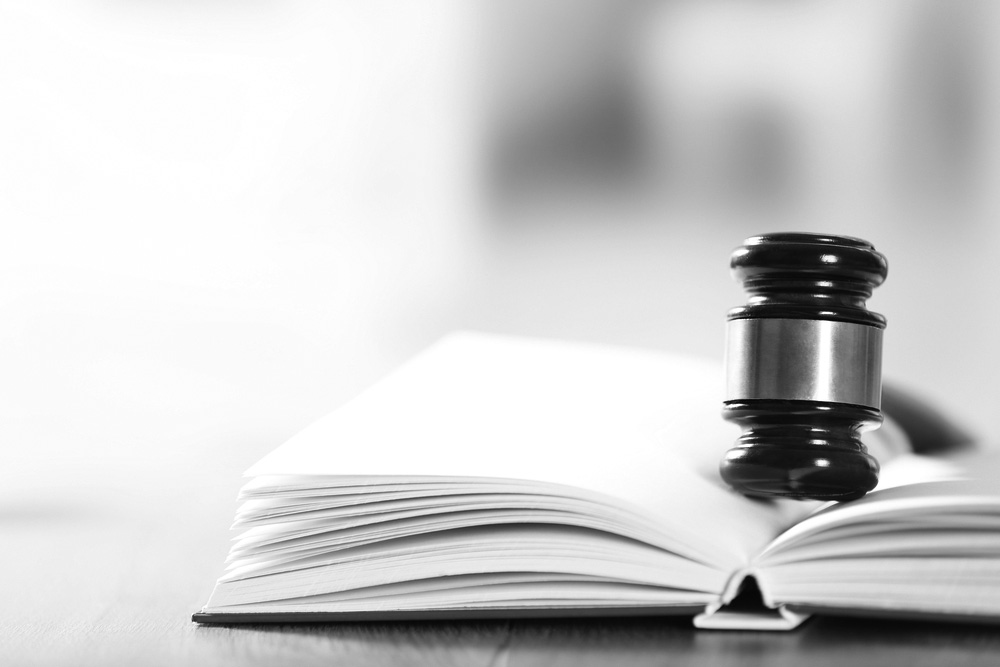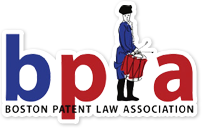Step Two is where the Federal Circuit has failed. The court has regularly held claims are not patent eligible if everything they add to a patent-ineligible concept is “well-understood, routine, or conventional.” But the Federal Circuit has provided little guidance as to when the a claim
does
contain an “inventive concept,” i.e., when do
the claim elements, as said by Justice Breyer in Mayo, “add enough … to allow the processes they describe to qualify as patent-eligible processes that apply natural laws.
”
The reason the Federal Circuit has not done so seems clear—it has not accepted that an “inventive concept,” as Mayo
and Alice
use the term in Step Two, is a concept that is not obvious. Were it to do so, Step Two would work. Its test would be one that both the United States Patent and Trademark Office (USPTO) and the courts understand and regularly apply: is the claim new and non-obvious? Requiring that a claimed application of an underlying “patent-ineligible concept” be non-obvious would also largely eliminate any risk that the claim might improperly “pre-empt” the underlying non-patentable concept.An “Inventive Concept” Is a Concept that Is Not Obvious
Section 103, by its own terms, requires that a determination of obviousness be made by considering "the subject matter as a whole." 35 U.S.C. § 103. Although this does not necessarily require that analysis of what is patentable subject matter under § 101 proceed on the same basis, we agree that it should.
The Supreme Court held the claims in
Flook
, Funk
, Mayo
, and Alice
invalid because, apart from a “formula” (Flook
), “law of nature” (Funk, Mayo
), or “abstract idea” (Alice
), the claims included nothing that was not “conventional
or obvious
.” Mayo twice said that purely “conventional
or obvious
” activity cannot transform an unpatentable principle into a patentable process.
Diehr
, whose claims included the old and unpatentable Arrhenius equation
, is the other side of the coin. The Mayo
Court took pains to point out that “obviousness” was the reason why Diehr
and Flook
reached opposite conclusions. Diehr’s
claims were patentable
because there was no suggestion that the steps added to the old Arrhenius formula “were in context obvious, already in use, or purely conventional.
” Flook’s
were not because the steps it added to new formula “were all ‘well known,’ to the point where, putting the formula to the side, there was no ‘inventive concept’ in the claimed application of the formula.
”
Despite this, Judge Lourie’s and Judge Rader’s concurring opinions in the Federal Circuit’s fractured decision in CLS Bank v. Alice
dismissed the possibility that “inventive concept
” required “an inquiry into obviousness.
” Instead, Judge Lourie said that the term “refers to a genuine human contribution to the claimed subject matter” and does not “impos[e] a requirement that such limitations must necessarily exhibit ‘inventiveness’
”; and to Judge Rader “inventiveness” was simply “shorthand” for an “inquiry into whether implementing the abstract idea … inherently requires the recited steps.
”Not surprisingly the Supreme Court’s
Alice
decision did not endorse these novel views, and they fortunately do not bind the Federal Circuit going forward. Judge Rader has since said that “no part of CLS Bank, including the plurality opinion, carries the weight of precedent.
” Mayo
, as Judge Dyk recently said, “is controlling precedent.
”:We cannot confine
Mayo
to its facts or otherwise cabin a clear statement from the Supreme Court. “[O]nce the Court has spoken, it is the duty of other courts to respect that understanding of the governing rule of law.” A court of appeals must not “confus[e] the factual contours of [a Supreme Court decision] for its unmistakable holding” to arrive at a “novel interpretation” of that decision. As we have recognized, “[a]s a subordinate federal court, we may not so easily dismiss [the Supreme Court’s] statements as dicta but are bound to follow them.”Recently, some Federal Court judges seem to have accepted that “inventive concept” does indeed have a great deal to do with obviousness. Last June, Judge Newman pointed out that “
Determination of what is an inventive concept favors inquiries analogous to those undertaken for determination of patentable invention, for a known idea, or one that is routine and conventional, is not inventive in patent terms.
” In December, Judge Laurie recognized that Mayo
“rejected activity that is purely conventional or
;” and Judge Dyk that obvious
Mayo
agreed that Flook’s
patent failed because “putting the formula to the side there was no ‘inventive concept’ in the claimed application of the formula
.”
The Supreme Court decisions in
Mayo
and Alice
were unanimous. After years of using the words “invention” and “obviousness” synonymously, it would be surprising indeed if the Court’s use of “inventive step” in Mayo’s
and Alice’s
Step Two intended otherwise. Going forward, it is time for the Federal Circuit to move beyond Judge Rader’s and Judge Lourie’s pre-Alice
views, to accept that the “inventive concept” required by Alice and Mayo
is a “non-obvious concept,” and thus give the practicing bar, the USPTO, and the lower courts, a clear and understandable standard to apply in taking Step Two—is the claim novel and non-obvious in view of the prior art?What is the Prior Art?
In determining whether a claim is obvious, the prior art applied in a Step Two analysis is broader than that normally used under
§
analysis. In the latter, the prior art is defined by 103
§
. In a Step Two “inventive concept” determination, it includes more. Because “laws of nature, natural phenomena and abstract ideas” are “excluded from … patent protection” under 102
§
, such excluded subject matter is “101
assumed to be within the prior art
.”
In Funk
, the Court accepted that the patentee had “discovered” a theretofore unknown natural principle - certain strains of bacteria could be mixed without inhibiting each other
. But it nonetheless held claims to a noninhibiting mixture of these bacteria invalid:[O]nce nature's secret of the noninhibitive quality of certain strains of the species of Rhizobium was discovered, the state of the art made the production of a mixed inoculant a simple step. … [I]t certainly was not the product of invention. There is no way in which we could call it such unless we borrowed invention from the discovery of the natural principle itself.
Thirty years later,
Flook
confirmed Funk’s
rule: “Indeed, the novelty of the algorithm is not a determining factor at all. Whether the algorithm was in fact known or unknown at the time of the claimed invention … it is treated as though it were a familiar part of the prior art.
” In 2010,
the rule that unpatentable subject matter is “assumed to be within the prior art” was confirmed once again; Bilski
repeated that Flook’s process “was unpatentable under §101… because once that algorithm [wa]s assumed to be within the prior art, the application as a whole contain[ed] no patentable invention.
Flook
(mathematical algorithm), Funk
, and Mayo
(law of nature), and Bilski
and Alice
(abstract idea) are also clear that if there is to be invention from a discovery of a law of nature, it must come from the application of the law to a new and useful end
. “[I]nvention” cannot be “borrowed” “from the discovery of the natural principle itself.
” Mayo
, as Judge Dyk said last December, “states that the inventive concept necessary for eligibility must come in the application analyzed at step two, rather than from the discovery of the law of nature itself.
”Conclusion
In short, the guidance that the Federal Circuit should give practitioners, USPTO Examiners, and the lower courts, all of whom need to determine both when claim elements
do
“add enough … to allow the processes they describe to qualify as patent-eligible to qualify as patent-eligible processes that apply natural laws, and when they do not
, is clear. Step Two’s “‘inventive concept’ sufficient to ‘transform’ the claimed abstract idea into a patent-eligible application” must come from the application of the “patent-ineligible concept” principle, and must not be obvious.
This is not to say that it will always be clear whether a claim directed to the application of something that is excluded is nonetheless patent-eligible. For example, last month, Sequenom asked the Supreme Court to review the Federal Circuit decision
that claims to a test that used a maternal
blood sample to detect a fetus’s paternally
inherited cffDNA were invalid.
Following its usual analysis, the Federal Circuit found
that both the existence
of cffDNA in maternal
blood and paternally
inherited cffDNA were natural phenomena, and that appending “routine, conventional steps … is not enough to supply an inventive concept.” What the Federal Circuit did not do was to consider if, looking at Sequenom’s claims as a whole, the claimed method of diagnosis using these phenomena was obvious. The Federal Circuit decision never used either “obvious,” or “claim as a whole.” Nor did it note that many, if not most, valid patents are for combinations of elements or steps that are individually old.
The newly-filed petition asks the Supreme Court to clarify Mayo
and “to emphasize that a new
combination
of otherwise conventional techniques is patent-eligible even if it is straightforwardly motivated by a patentee’s unique discovery of a natural law or phenomenon.” Hopefully, the petition will be granted and the Court will clarify that whether Sequenom’s “new combination” satisfies Step Two depends on whether or not the claim as a whole is “inventive.”Before the
1952 Act
introduced “obviousness,” the Supreme Court regularly decided whether what a patent claimed was an “invention.” Since Graham
, the Court has used the terms “inventive” and “nonobvious” interchangeably, e.g.,: “the use of the old elements in combination was not an
”
The phrase “inventive concept” seems to have originated with Flook’s statement that invention
by the obvious-nonobvious
standard.“the discovery of [a phenomenon of nature] cannot support a patent unless there is some other
” Flook also said that deciding whether there is an “inventive concept” required “a determination of “obviousness”:inventive concept
in its application.

Alice: Making Step Two Work
April 2016 -
By
James Lampert
, retired from WilmerHale
The Federal Circuit has had no apparent difficulty with Step One. Since Mayo and Alice,
the court has issued more than 25 decisions in which it found that the “principle” or “idea” involved in a claim was patent-ineligible
, and articulated what that patent-ineligible concept was. This lack of difficulty is not surprising. Courts have been required to differentiate between an unpatentable “principle,” “idea,” or “other abstraction,” and a potentially inventive application of that idea or principle, since the mid
-1800s
.“[F]irst determine whether the claims at issue are directed a patent-ineligible concept.”
Second, “examine the elements of the claim to determine whether it contains an ‘inventive concept’ sufficient to ‘transform’ the claimed abstract idea into a patent-eligible application.”


Ten years ago, ” It has been four years since
three Supreme Court Justices resurrected the principle
that “laws of nature, natural phenomena and abstract ideas” are “excluded from … patent protection
.Mayo
established a two-step framework, most clearly stated in Alice
two years later, for applying that principle:

Table of Contents
President's Message by Erik Belt
Read more >
Message from the Editor-in-Chief
Read more >
Alice: Making Step Two Work
Read more >
Grant Submissions and Novelty: A Catch-22 for Startups
Read more >
When are Method/Device Hybrid Claims Indefinite?
Read more >
Update on the Patent Pro Bono Program of New England and Call For Volunteer Attorneys!
Read more >
Saved by the Date? Is Your Pre-AIA Patent Still At Risk for AIA Post Grant Review?
Read more >
Index
6th annual Invented Here! Announcement
Read more >
BPLA Sponsors the New England Innovation Award Program of Smaller Business Association of New England (SBANE)
Read more >
Report on the Giles Rich Moot Court Competition
Read more >
BPLA Writing Competition Accepting Entries
Read more >
Annual Judges' Dinner
Read more >
IP Roundtable with Chief Judge Saris
Read more >
Significant changes to the rules related to european trademarks ¡v three things you should know
Read more >
What/where/when/why/how do I include this sequence in a sequence listing?
Read more >
Members on the move
Read more >
< Back
Member Companies and Firms are Encouraged to Utilize BPLA’s Career Center
Read more >

